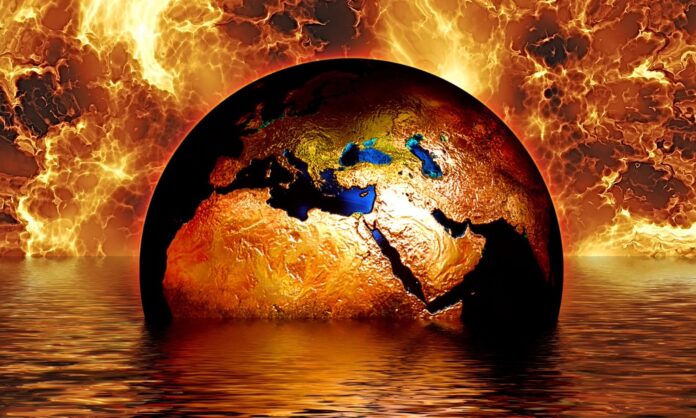Amila Rafique
Climate change seems to be an open threat to the life on earth. In the last two decades, the global temperature has shown an evident increase. Climate change is increasing more likely in an irreversible trend. It is because of a number of reasons, including excessive use of energy resources, overpopulation, deforestation and ozone depletion. All these problems in collaboration increase in release of Carbon dioxide and other greenhouse gases (GHG). Carbon dioxide is absorber of the sunlight radiations which consequently increase the temperature of the earth atmosphere. It is obvious that the omission of greenhouse gases will lead to further increase in the temperature of the various components of the earth ecosystem and climate system.
According to a report published by UN Intergovernmental Panel on Climate Change (IPCC), the climate change risks will be higher by the end of 21st century. If the world continues to spew greenhouse gases at such accelerating rate, the temperature will more likely increase at the mid of the century by 2 degree Celsius (3.6-degree Fahrenheit) as compared to the temperature between 1986 to 2005, says the report.
Besides, the climate change could hinder in efforts to grow food in terrestrial ecosystems while the absorption of carbon in sea water causes acidification of the oceans that will obviously harm marine life. Similarly, the crops and livestock are even more sensitive to climate both negatively and positively. Agricultural systems are also affected by the extreme climatic events such as floods, droughts, seasonal vulnerabilities and changing rainfalls. In against to this backdrop, many factors such as, agricultural policies, prices, technology research and development affect farmers’ adaptations.
As in Pakistan, majority of the population dwells in rural areas in which, 24.3% is below the poverty line. The increase in inflation in addition with the pandemic repercussions and decades long terrorism have halted the economic development of Pakistan. Climate change and COVID-19 have become serious health crises with a joint way forward. Similarly, climate change has started to affect the agricultural productivity and farmers’ livelihoods, more specifically in rural and agricultural areas. The families, whose dependency is mostly on agriculture, have been facing serious consequences in earning livelihood for their families.
Pakistan, being an agricultural country, majority of the land is arid and semi-arid, where the agriculture is mostly dependent on the natural rainfall. Approximately 60 percent of these agricultural lands receive rainfall of less than 250-500 mm in a year. Furthermore, the lands fed by the water of irrigation, arrives from Hindu Kush and Karakoram Himalayan glaciers, where obvious recession have been noticed lately due to the global warming.
Because of the climate change, agricultural productivity has been affected adversely and resultantly, the food security is at alarming stage. It is also because of the location of Pakistan due to which, the vulnerability of Pakistan to climate change is more as compared to global averages because of the warmer climate as it is situated in a region where the occurrence of temperature is expected to be higher. According to a report published by Task Force on Climate Change (2010), the greenhouse gases GHGs emissions made by Pakistan were 309 million tons (mt) in 2008. On the other hand, it can be said that no country on this planet is immune to GHGs including Pakistan. So, one must be clear that the emission of GHGs in to the atmosphere in collaboration with other anthropogenic activities beyond the natural limits have shown enhanced greenhouse effect.
Climate change is also affecting the biodiversity and ecosystem. The rainfalls and temperature are the basic components to assure the availability of convenient habitat for living creatures. A place for living where they can live freely, grow and reproduce. Climate change have consequences in distribution, growth, reproduction timings as well as the extinction rates. These ecological changes will somehow result in shifting of range of species and their composition. Such kind of shifting will result in migration of these communities in to higher altitude. Also, the change in temperature will affect the interaction between the species as well as the geographic distribution of the species.
This is very unfortunate that the world, especially developing countries, have been using the non-renewable energy resources — fossils fuels and hydrocarbons, very rapidly to produce energy in almost every aspect of life, whether its agriculture, transportation, power generation and so on.
In a nutshell, it can be concluded that all these activities result in emission of GHGs to the atmosphere and consequently the earth’s temperature is getting higher. Due to this increase in temperature, the whole ecosystem of the world is affected in shape of melting glaciers, ozone depletion, irregular rainfalls, droughts, unexpected changes in species, migration, food insecurity and health issues.
Amila Rafique is a young economist associated with Pakistan Institute of Development Economics (PIDE), Islamabad.




